Aval Kesari, also known as Poha Kesari or Flattened Rice Kesari, is a delicious and popular Indian sweet dish that originates from the southern region of India.
With its golden color and tempting aroma, Aval Kesari is sure to become a favorite treat for both kids and adults alike. Whether you enjoy it warm or chilled, this sweet delicacy will add a touch of joy and sweetness to your day.
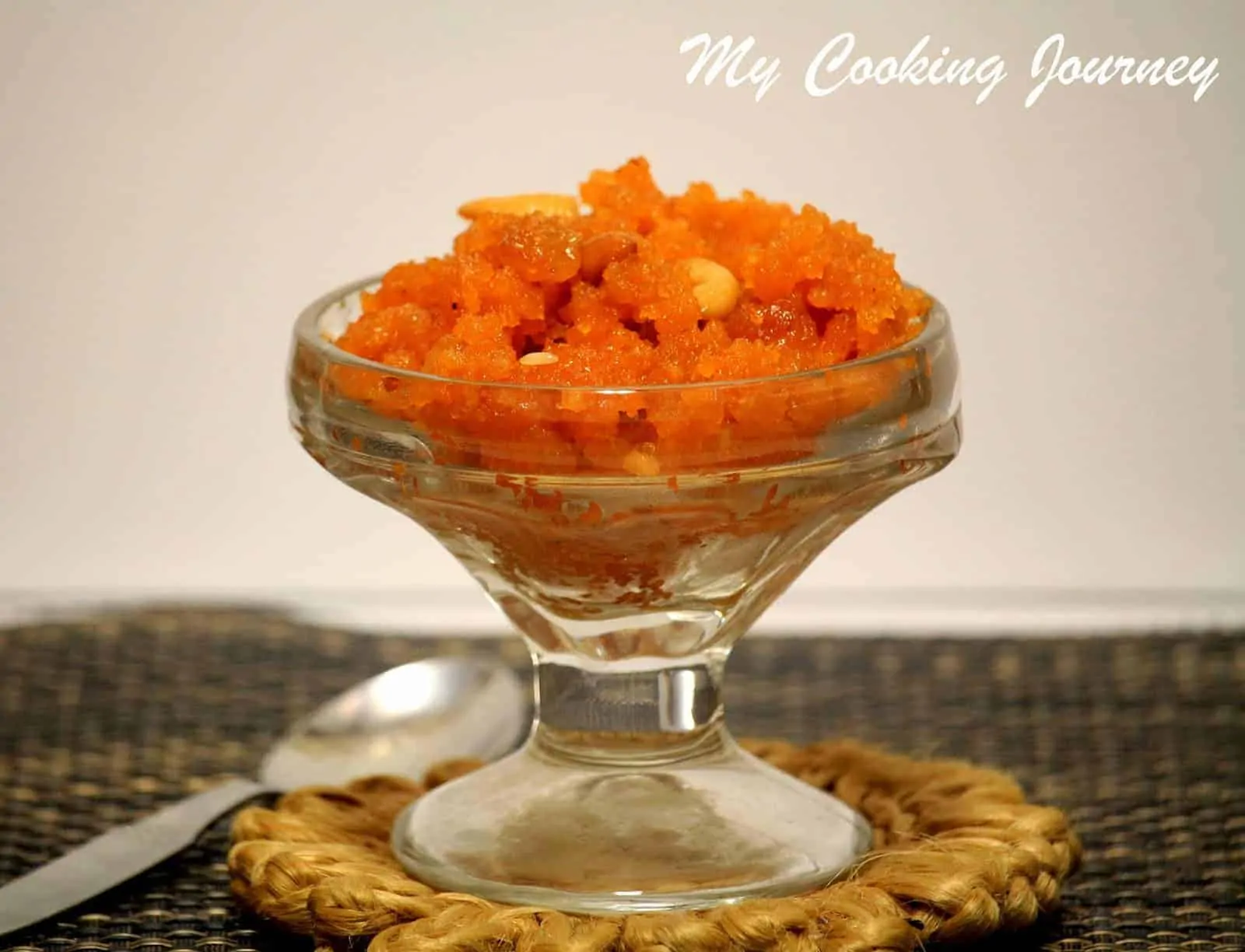
Kesari is something that my boys love to eat any day. I often make some traditional sweets to satisfy their sweet buds (and also mine). Because of this, my boys have gotten used to eating traditional Indian sweets.
I often make rava (semolina) kesari and Semiya (vermicelli) kesari but have never made aval kesari before. One of our favorites is this mixed fruit kesari. I also make Kuthiraivali / barnyard millet kesari and it is a great option to include whole grains. Last week when thinking of what to make for prasadam to take to the temple, my mom suggested that I make aval kesari.
This kesari is very simple to make and is ready within 30 minutes. I also happened to have a lot of aval/poha in the pantry. Aval has a long shelf period, but I wanted to use them up soon.
So when I chose the theme of ‘pick one ingredient and make three different dishes’ for this week’s Blogging Marathon, I knew I wanted to use Aval as my ingredient. So this is my first dish, a very common South Indian sweet made with Aval (poha).
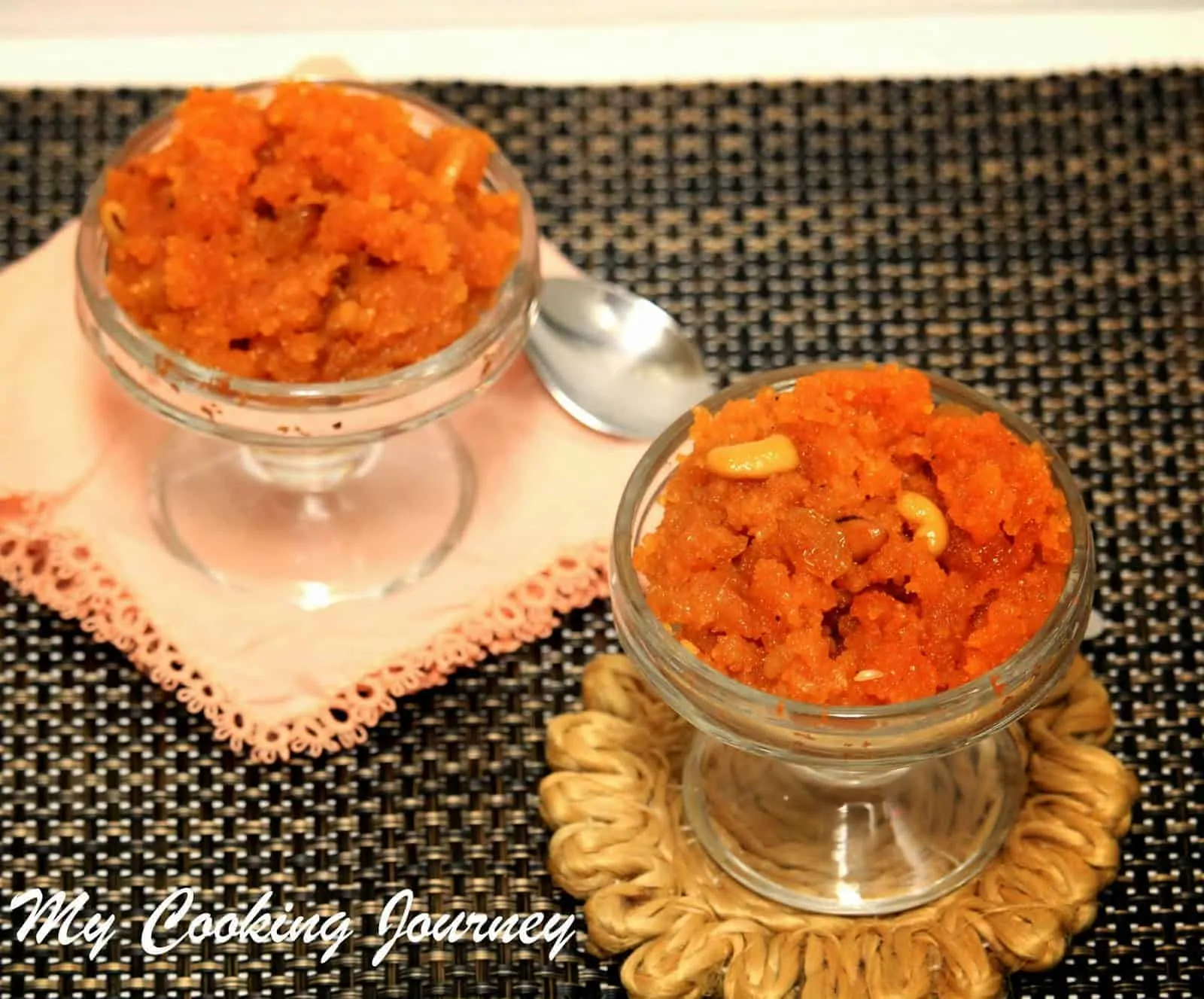
Aval Kesari is a popular dish in various regions of India, especially during festivals and celebrations. It is loved for its simplicity, quick preparation time, and irresistible flavors.
Aval is Lord Krishna’s favorite snack to eat. Aval kesari is hence prepared on the occasion of Krishna Jayanthi / Janmashtami. I also got the opportunity to tell the story of the friendship between Krishna and Sudhama (Kuchela).
Preparation time – 10 minutes
Cooking time – 30 minutes
Difficulty level – easy
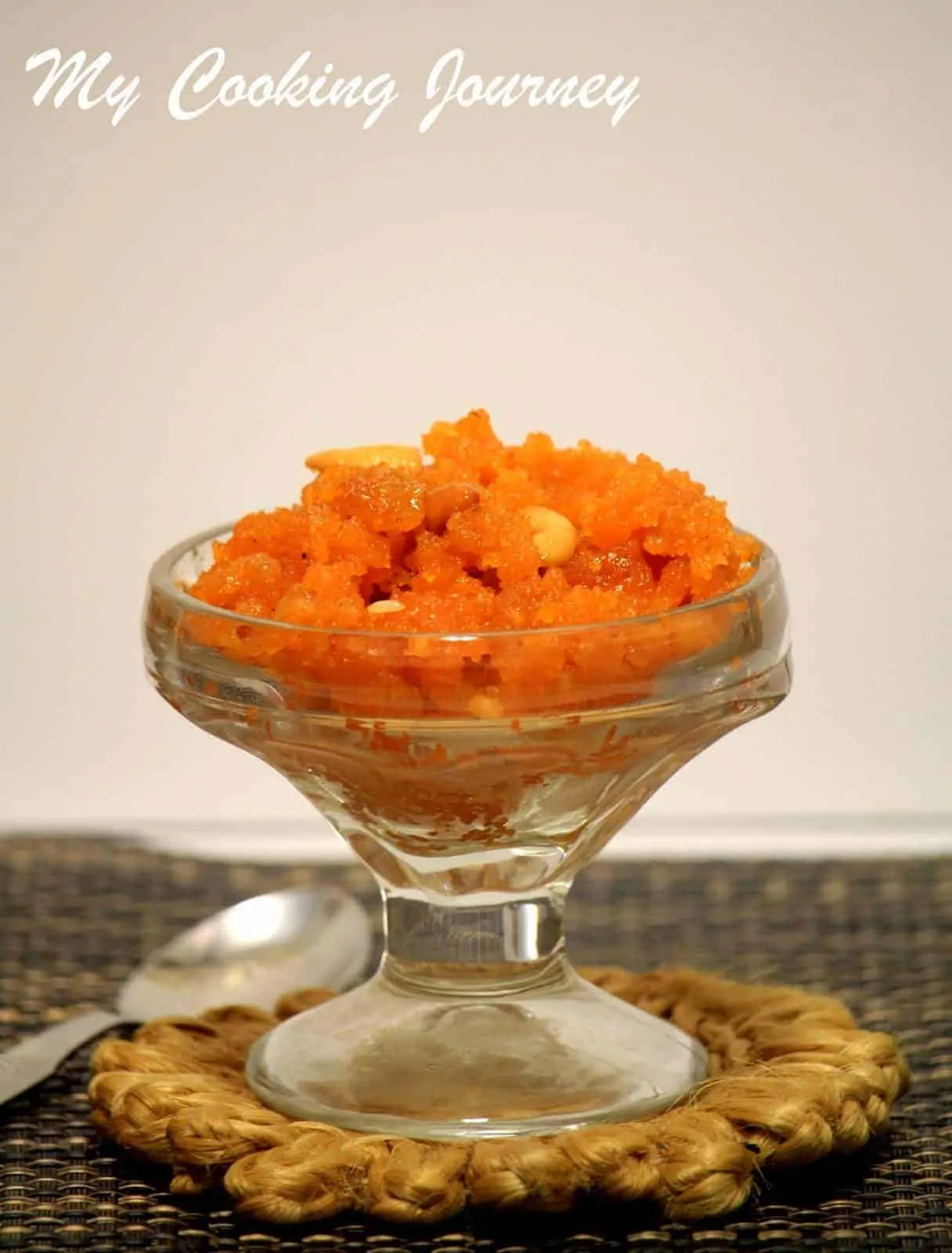
Ingredients to make Aval Kesari – Serves 4-6
- Aval / poha – 1 cup (I used a medium thick variety)
- Sugar – 1 cup
- Ghee – 6 tbsp
- Cardamom powder – ¼ tsp
- Orange color – a pinch
- Cashews – 3 tbsp
- Raisins – 3 tbsp
- Water – about 2-3 cups (depends on the aval)
Step-by-step process
- Grind the aval to coarse rava-like powder in the mixer. This helps the aval to cook quickly and evenly.
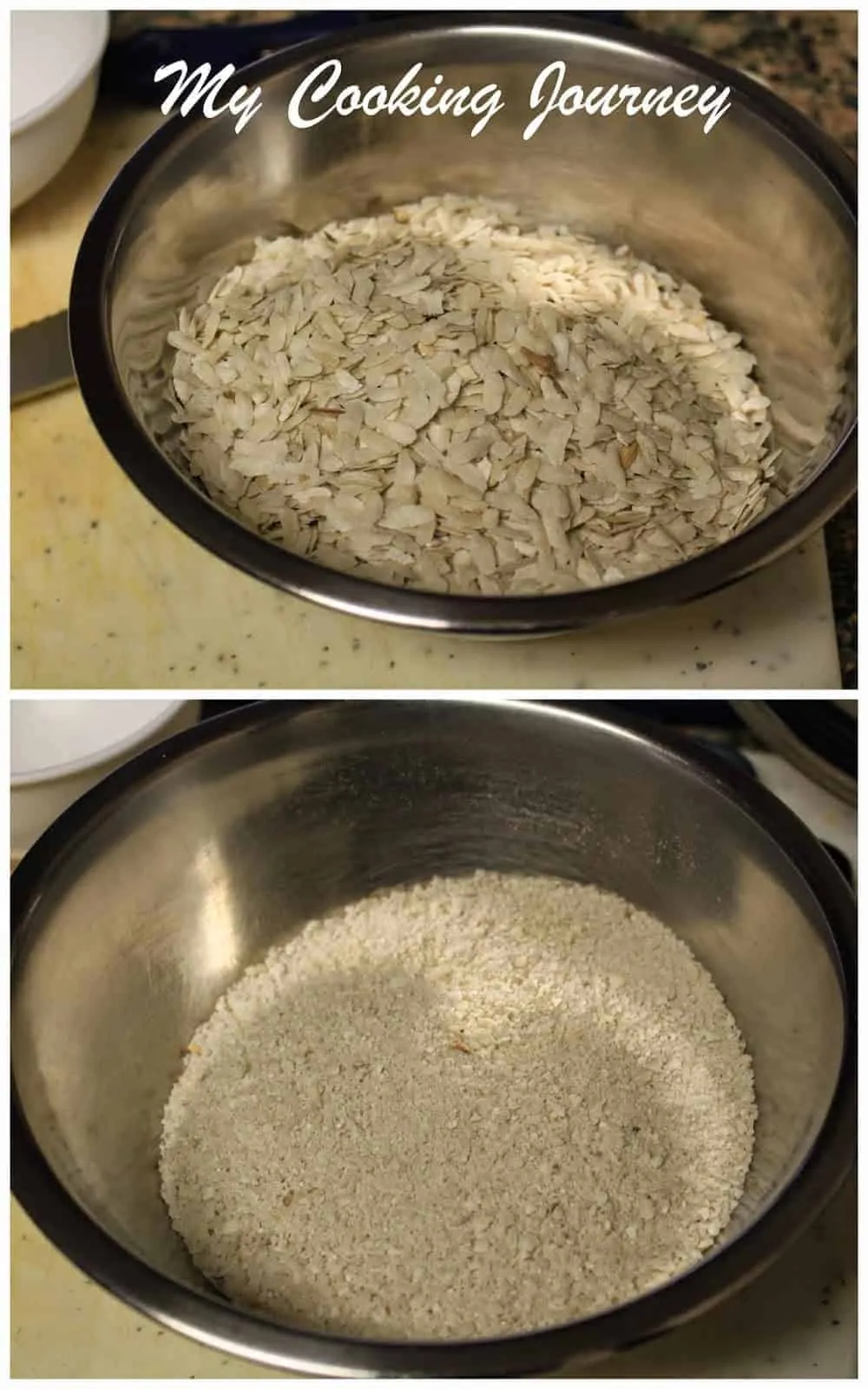
- In a pan, heat about 3 tablespoon of the ghee and fry the powdered aval. Carefully fry it in low-medium flame until it is golden brown. Keep stirring to avoid burning the aval.
- Simultaneously bring about 3-4 cups of water to a boil. When the aval is fried to a light brown color, reduce the flame to the lowest and carefully add the hot water to the pan. Add about half of the water and let the aval absorb the water and cook. Gradually add up to a cup more water and let the aval cook. Once the aval cooks well and becomes solid, add the entire content of the sugar.
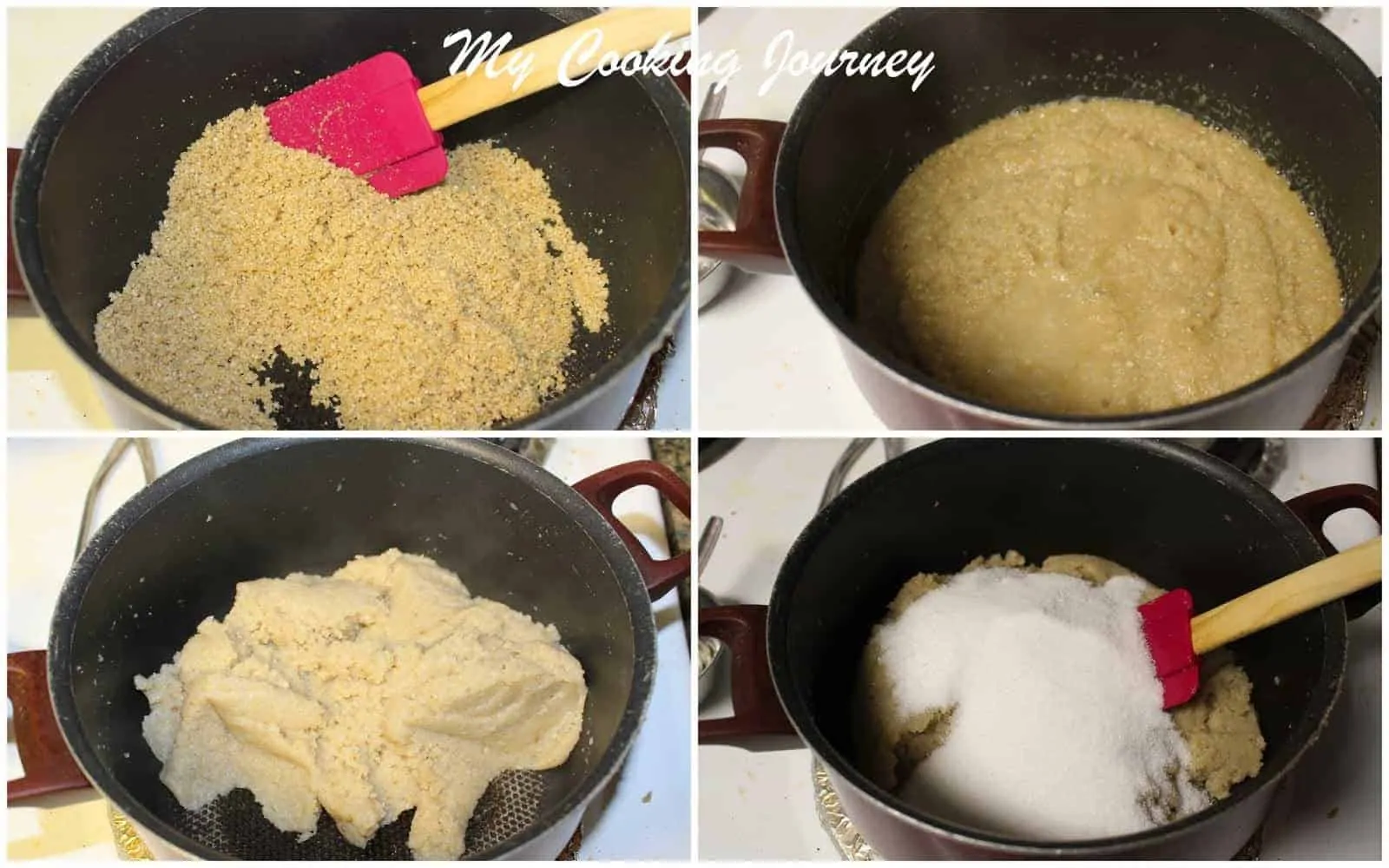
- The mixture will liquefy once the sugar is added. Mix well and add the edible color and 2 tablespoon of ghee. Mix in low flame until the kesari starts to leave the side of the pan and thickens a bit. This should not take more than 5 minutes.
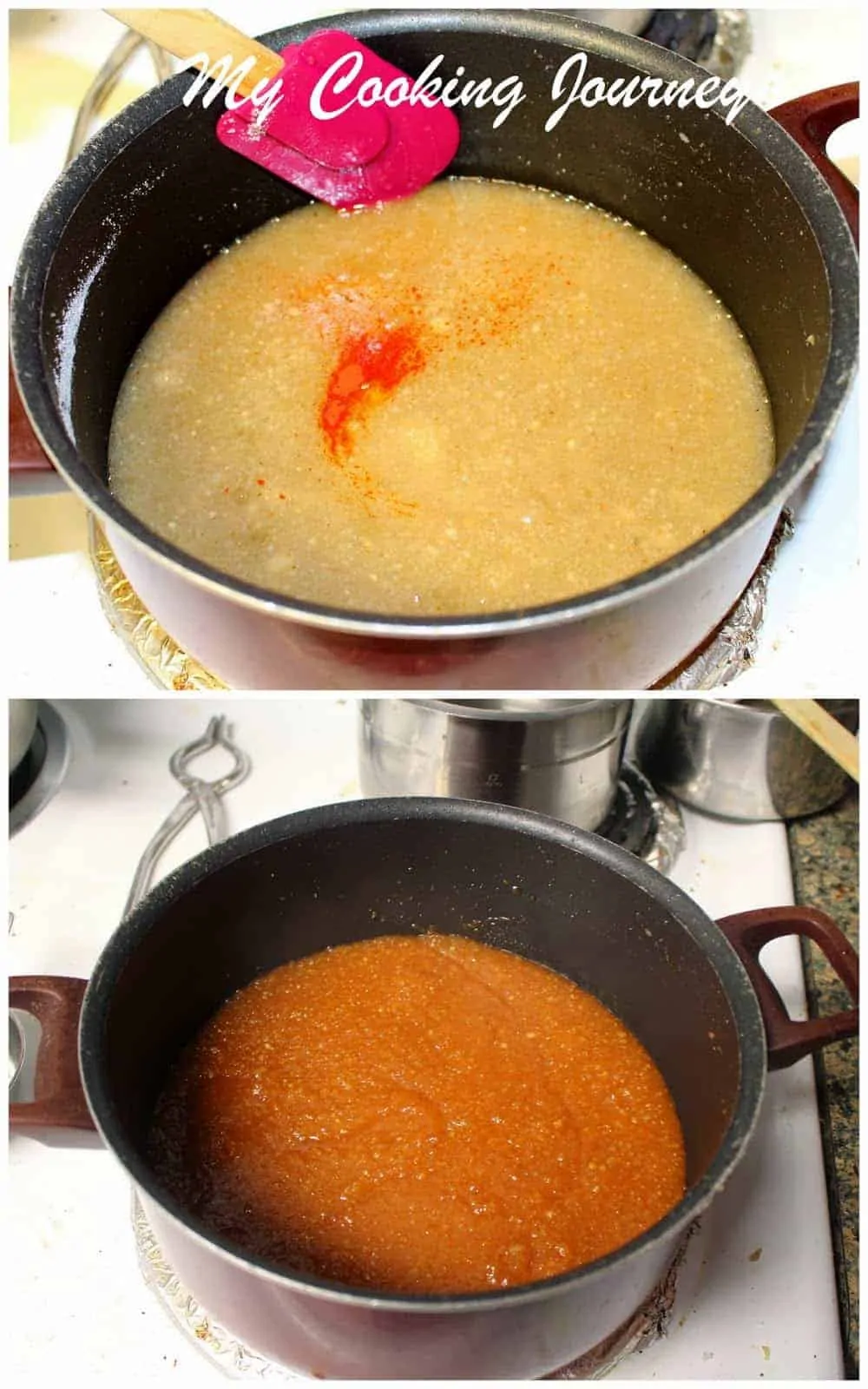
- In a small pan, heat the remaining 1 tablespoon of ghee and fry the cashews, raisins, and cardamom powder. Add it to the kesari and mix.
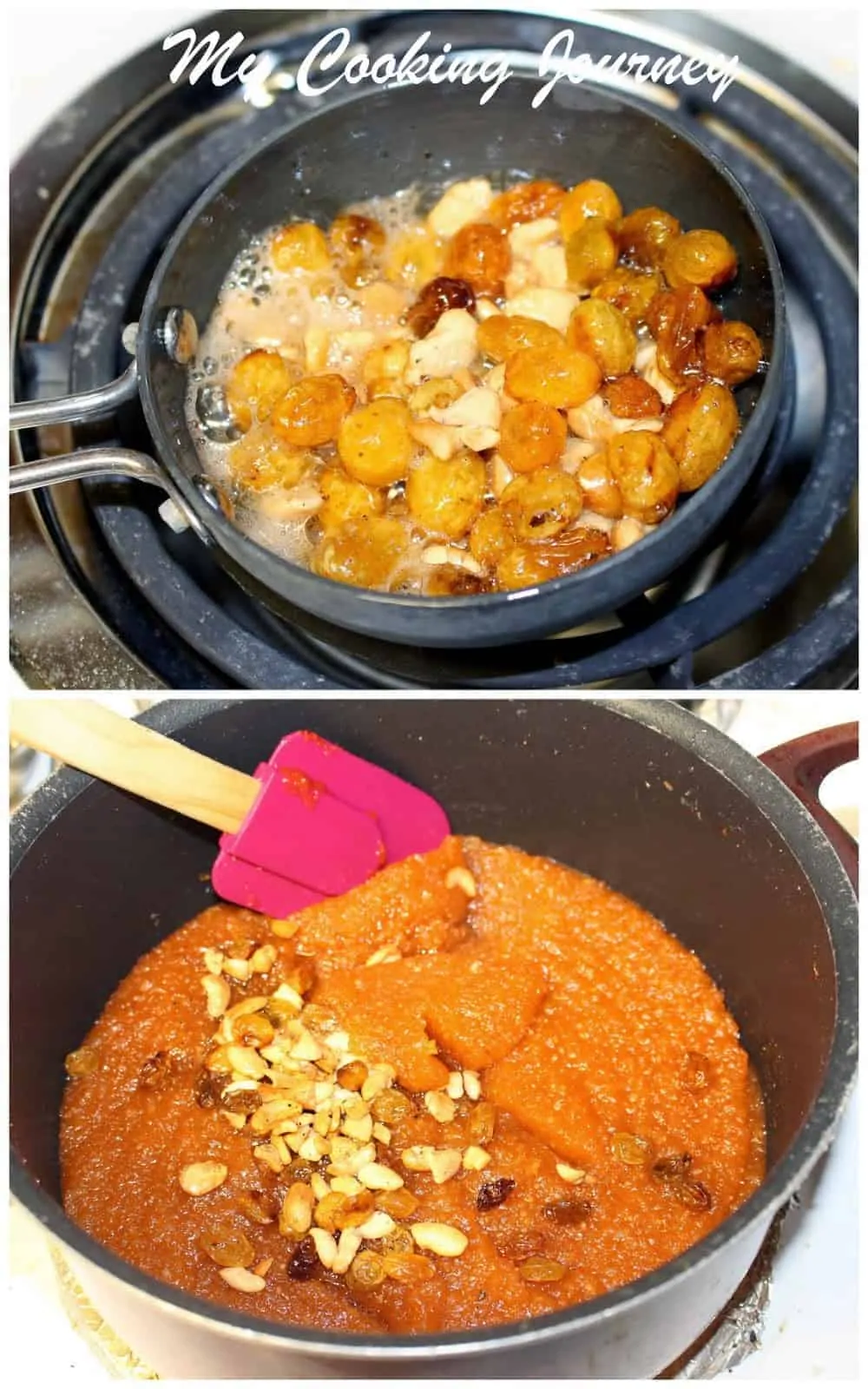
- Serve poha kesari warm or at room temperature.
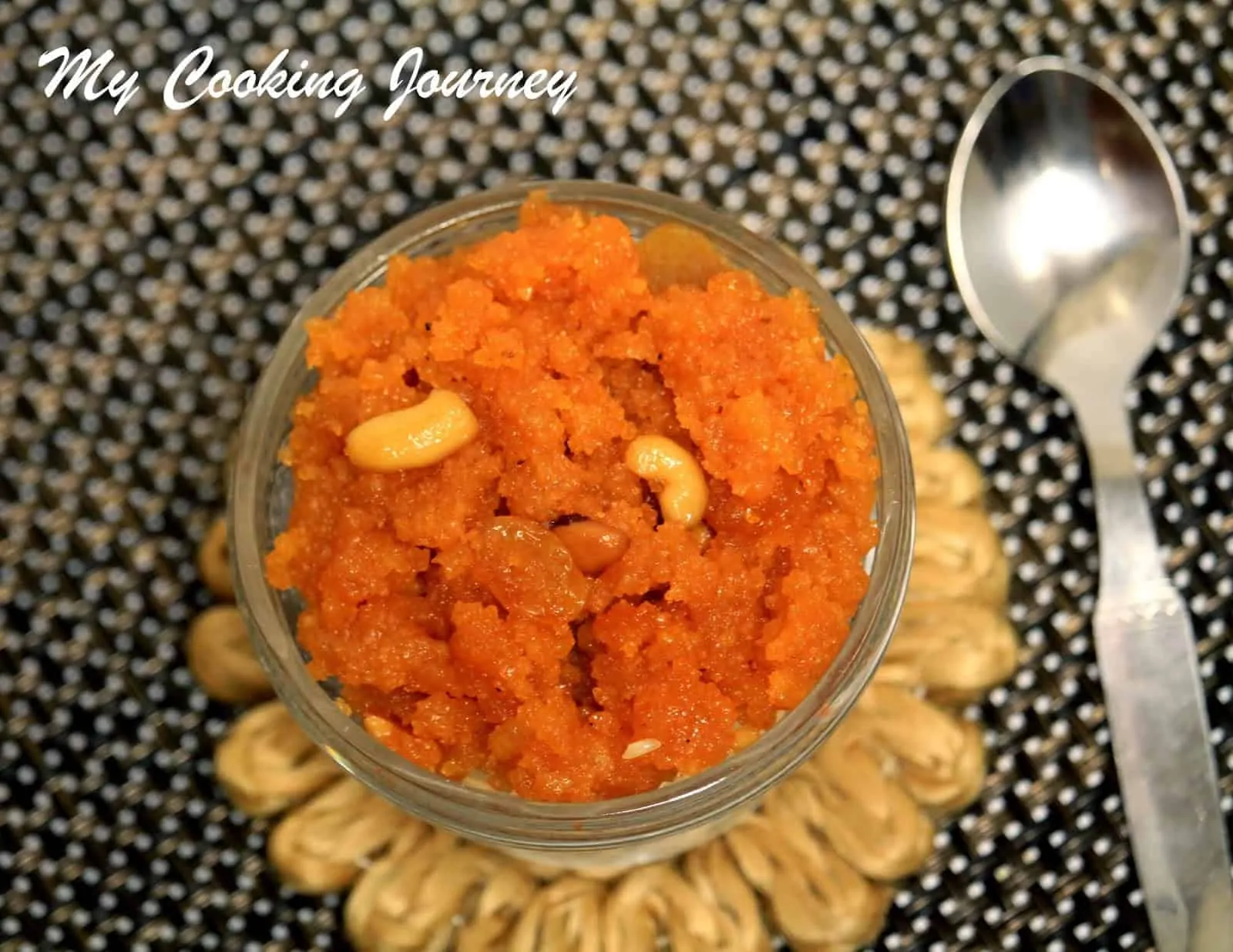
Expert Tips
- Grind the poha to a coarse powder. This helps in evenly cooking the aval and also the texture of the kesari is better.
- Fry the aval in a very low flame as it could burn easily.
- The kesari will thicken slightly after cooling.
- Edible food color can be skipped if preferred.
Frequently asked questions
Yes, the most common type of kesari or sheera is made with rava/semolina. I also make kesari with semiya or vermicelli. Our favorite is this Fruit kesari or mixed fruit sheera. We could also use whole grains such as barnyard millet to make this kuthiraivali kesari.
I have not made vegan kesari yet. But coconut oil should work instead of ghee to make the kesari vegan.
This kesari can stay outside for a day or so since we have not used any milk. If storing longer than, refrigerate the aval kesari and warm it slightly in the microwave or stovetop before serving.
More aval/poha recipes
If you made this recipe and liked it, give a star rating on the recipe card or let me know in the comments below. You could also share it with me on Instagram using #MyCookingJourney and tagging me @sandhya.ramakrishnan. You could follow me and my recipes on Facebook |Instagram | Pinterest | Twitter/X
Recipe
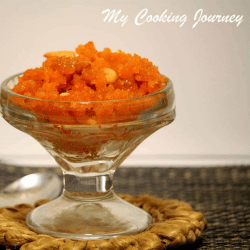
Aval Kesari | Poha Kesari Recipe
Equipment
- pan
- spatula
Ingredients
- 1 cup Aval / poha I used medium thick variety
- 1 cup Sugar
- 6 tbsp. Ghee
- ¼ teaspoon Cardamom powder
- a pinch Orange color
- 3 tbsp. Cashews
- 3 tbsp. Raisins
- 2 cups Water Depends on the aval
Instructions
- Grind the aval to coarse Rava like powder in the mixer. This helps the aval to cook quickly and evenly.
- In a pan, heat about 3 tablespoon of the ghee and fry the powdered aval. Carefully fry it in low-medium flame until it golden brown. Keep stirring to avoid burning the aval.
- Simultaneously bring about 3-4 cups of water to a boil. When the aval is fried to a light brown color, reduce the flame to the lowest, and carefully add the hot water to the pan. Add about half of the water and let the aval absorb the water and cook. Gradually add up to a cup more of water and let the aval cook. Once the aval cooks well and becomes solid, add the entire content of the sugar.
- The mixture will liquefy once the sugar is added. Mix well and add the edible color and 2 tablespoon of ghee. Mix in low flame until the Kesari starts to leave the side of the pan and thickens a bit. This should not take more than 5 minutes.
- In a small pan, heat the remaining 1 tablespoon of ghee and fry the cashews, raisins, and cardamom powder. Add it to the Kesari and mix.
- Serve warm or at room temperature.
Notes
- Grind the poha to a coarse powder. This helps in evenly cooking the aval and also the texture of the kesari is better.
- Fry the aval in a very low flame as it could burn easily.
- The kesari will thicken slightly after cooling.
- Edible food color can be skipped if preferred.


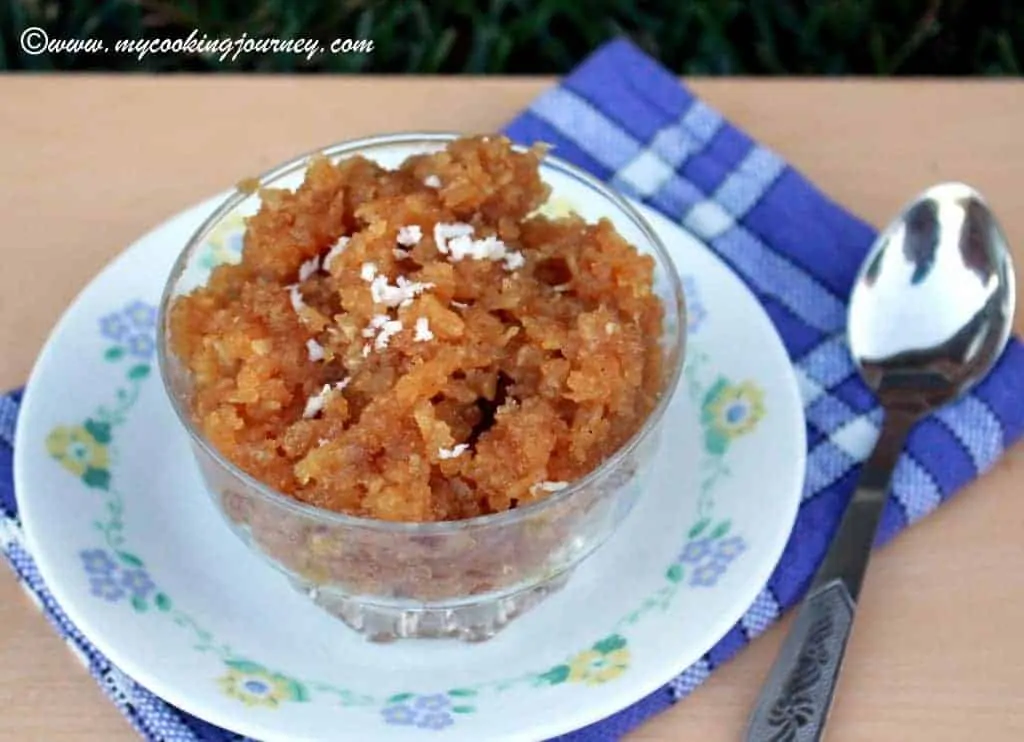
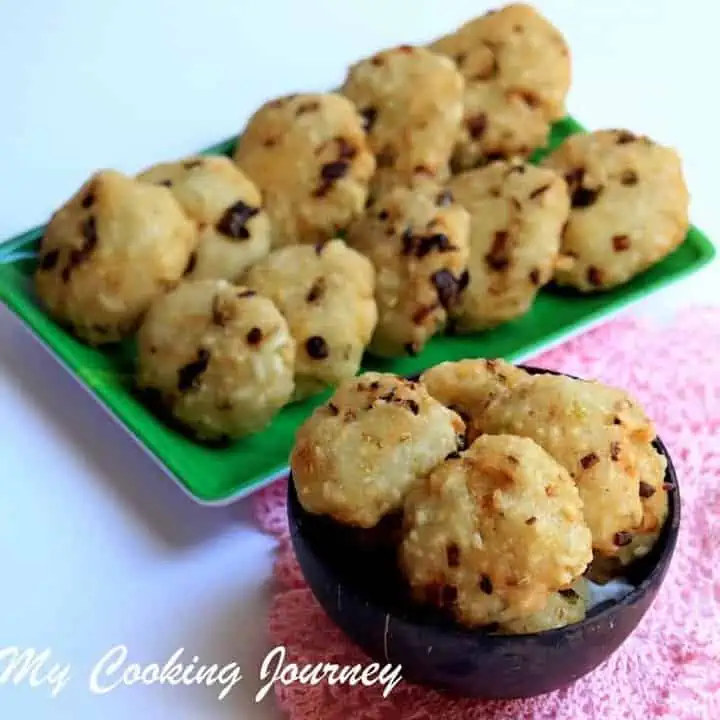
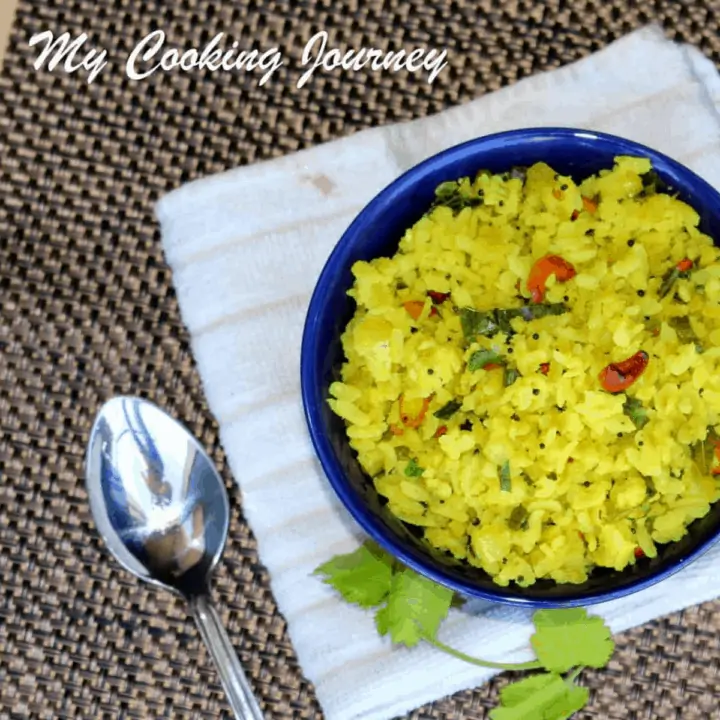
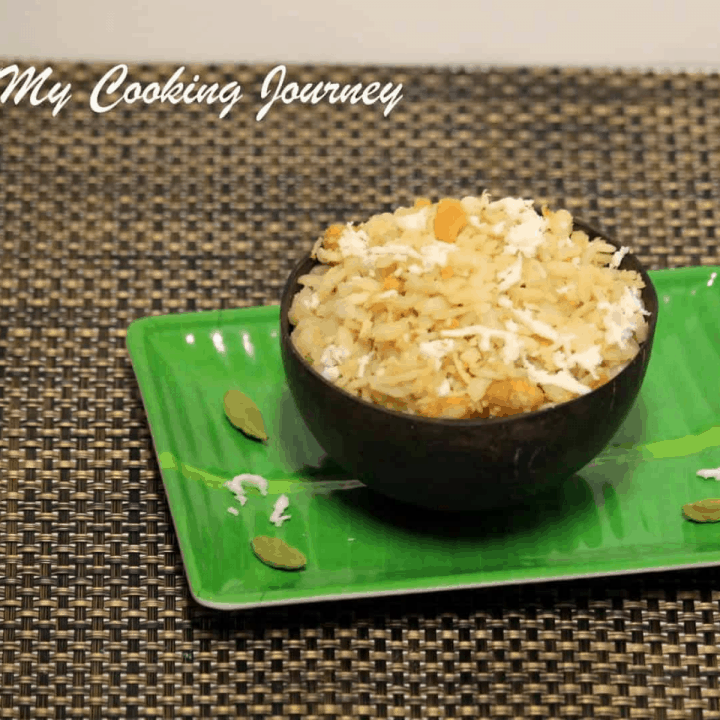
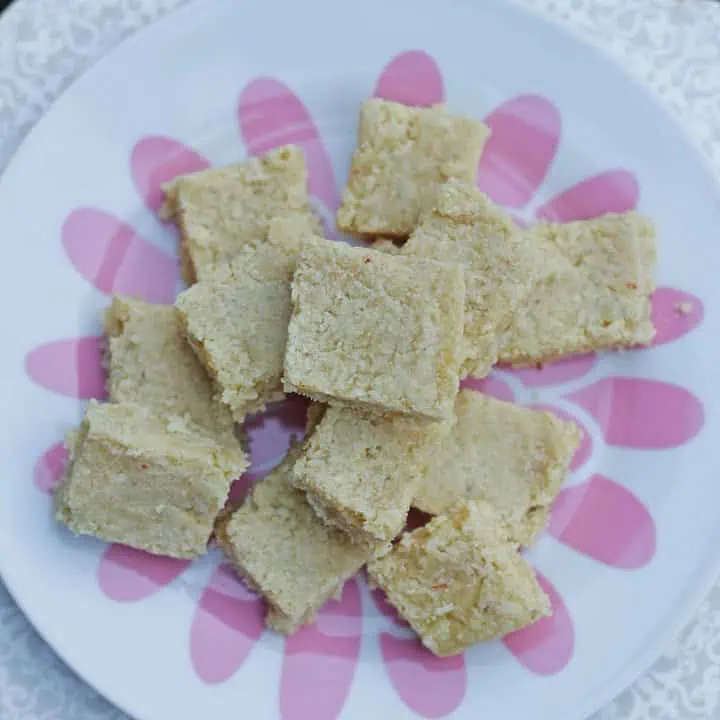
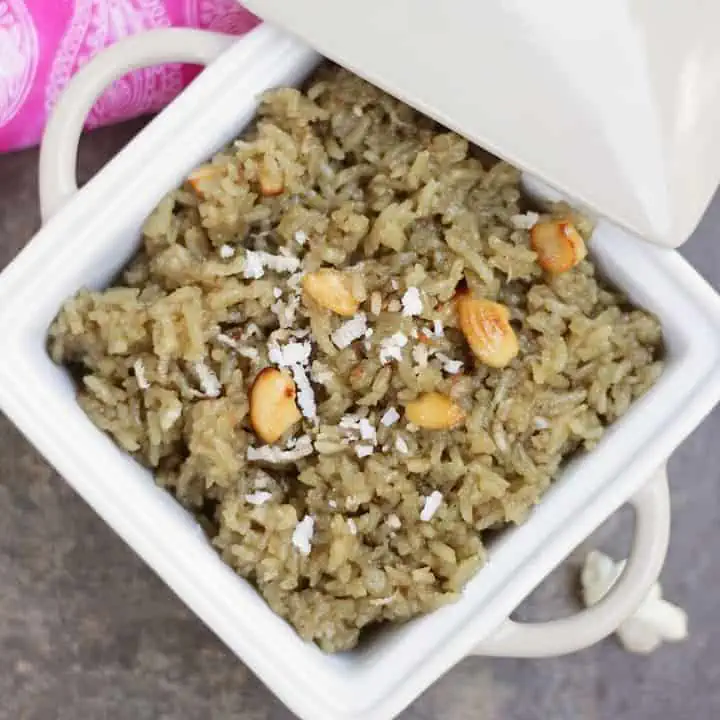
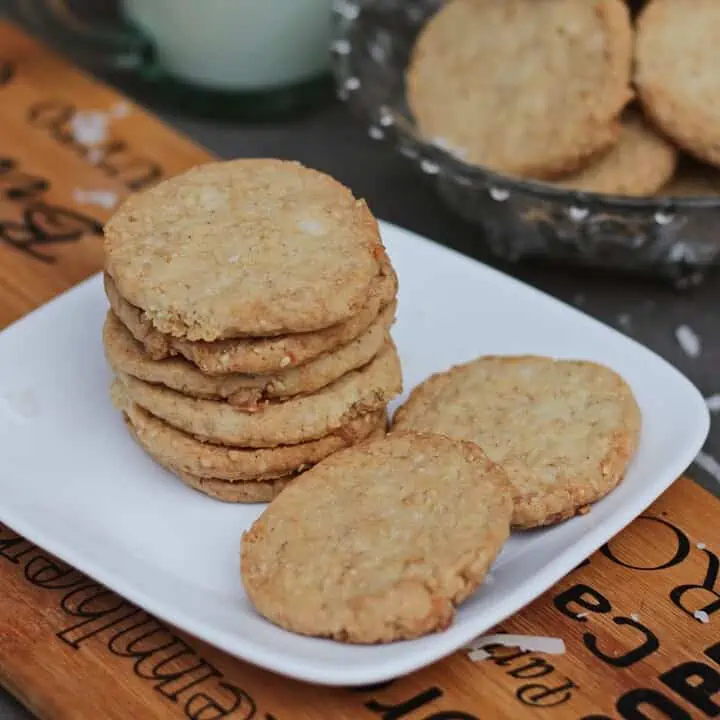

Leave a Reply